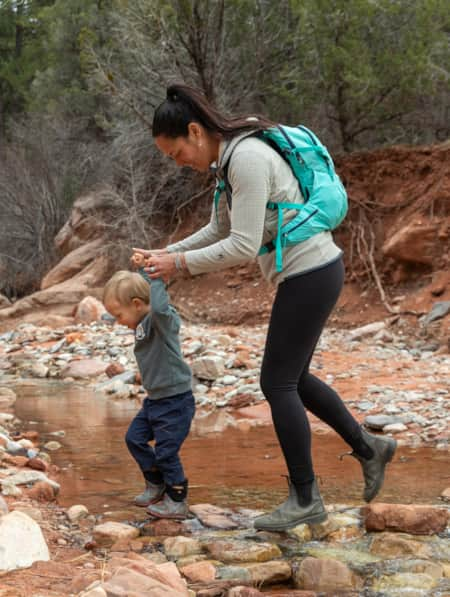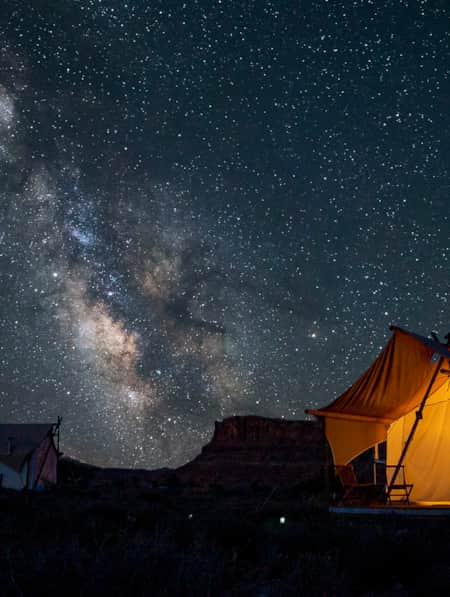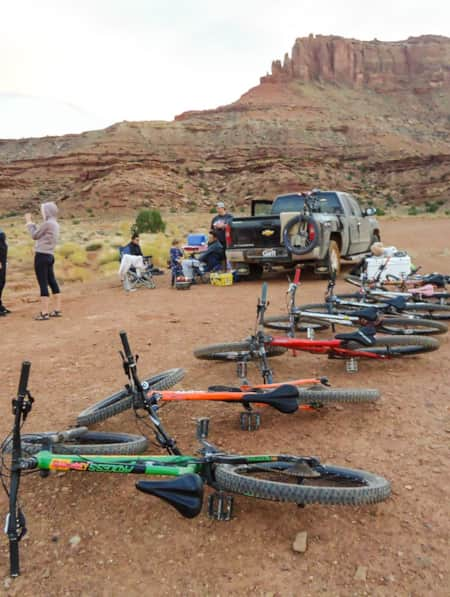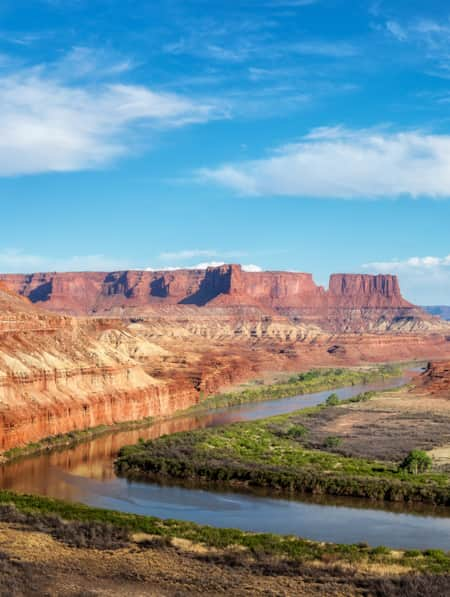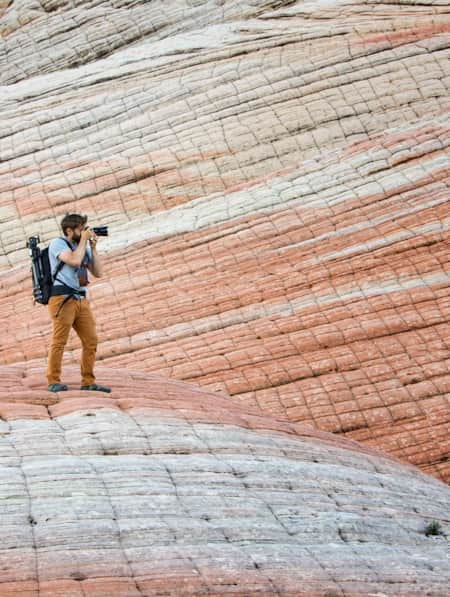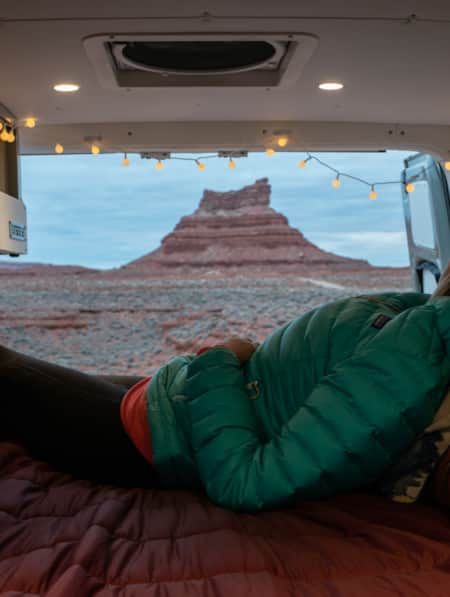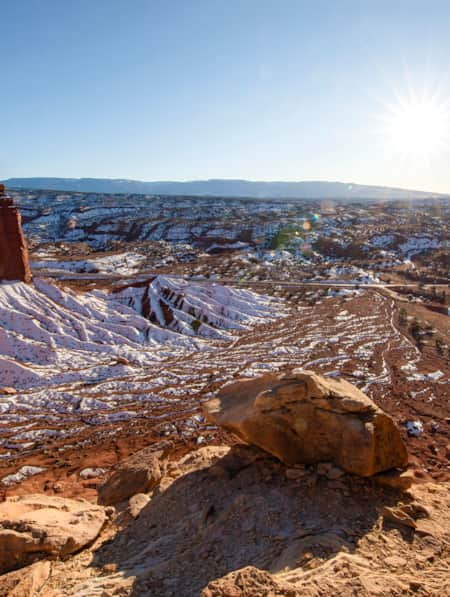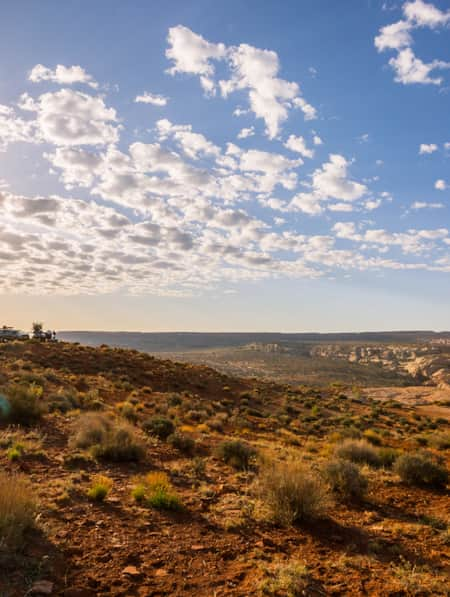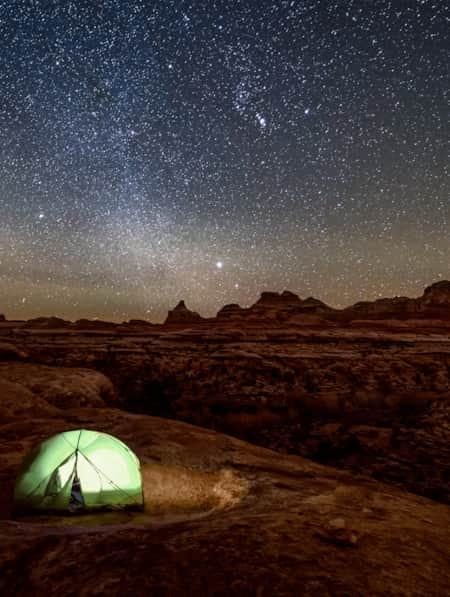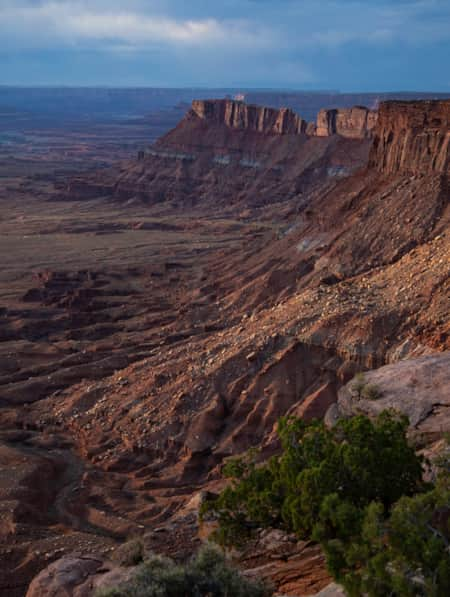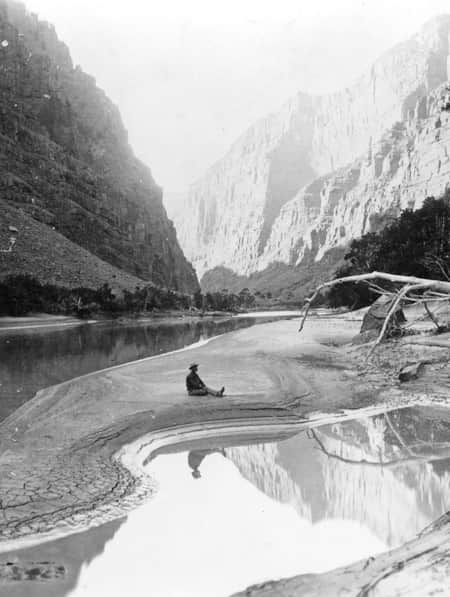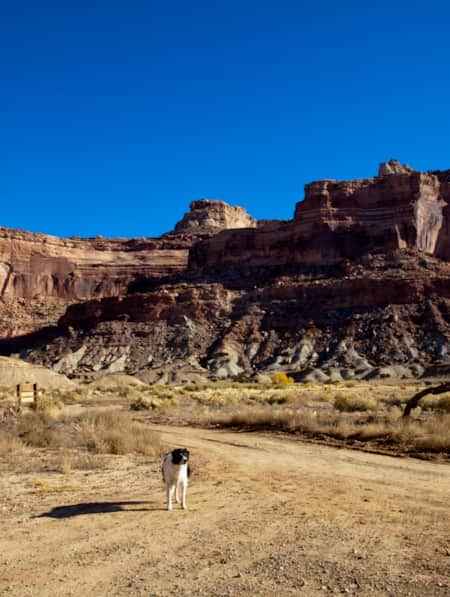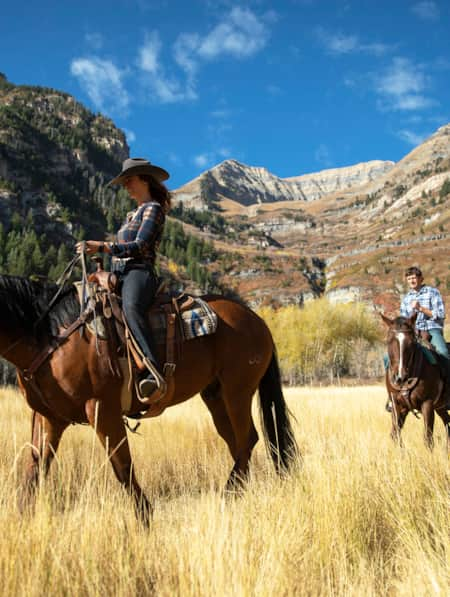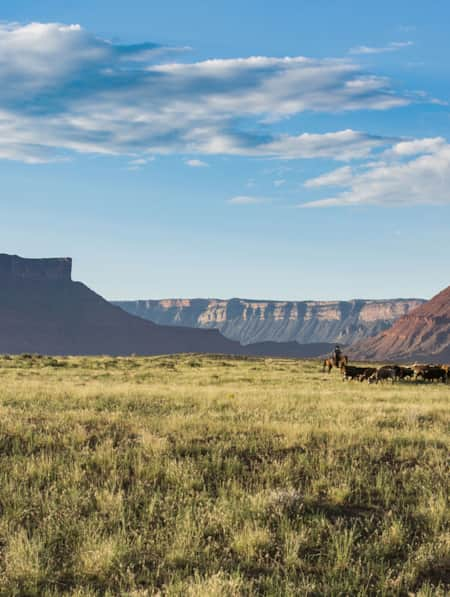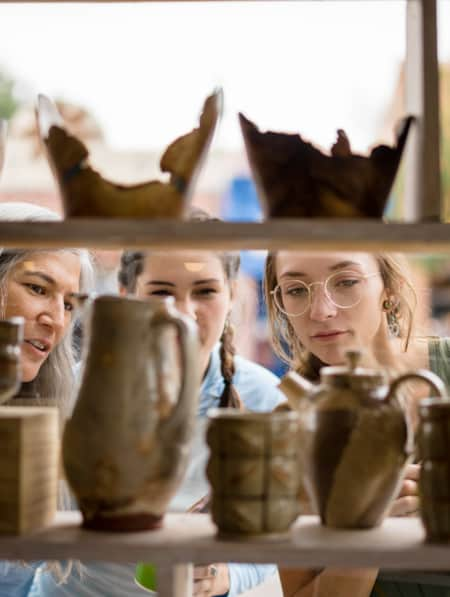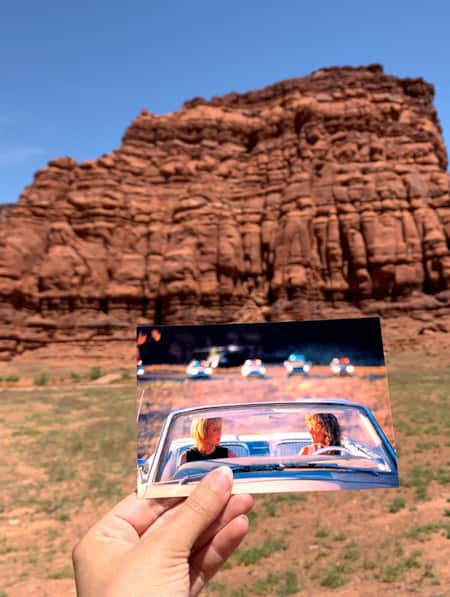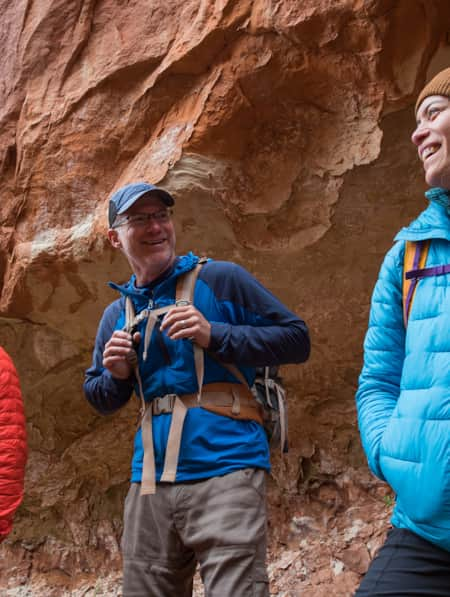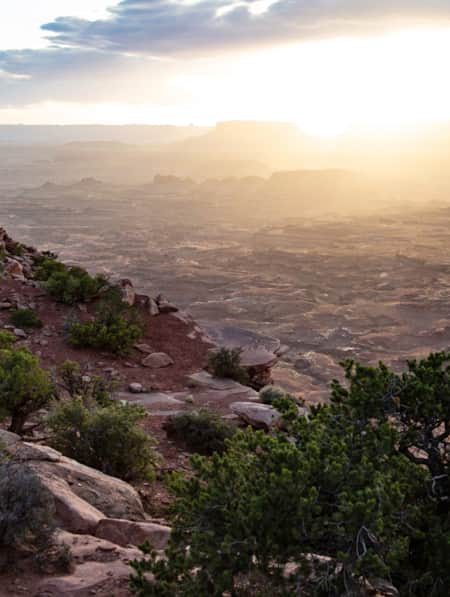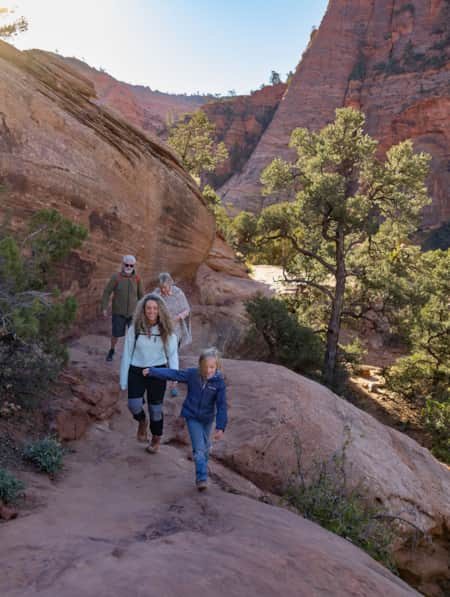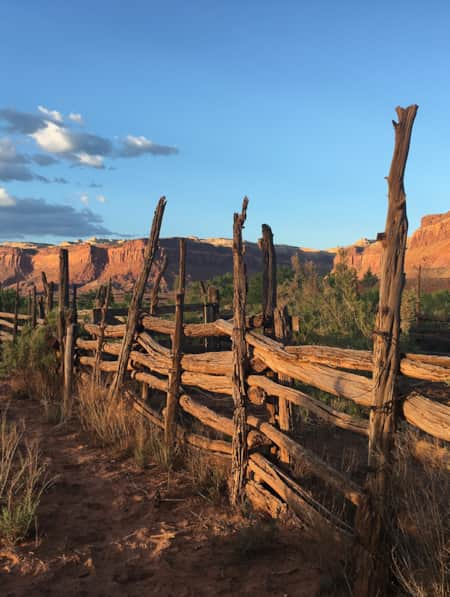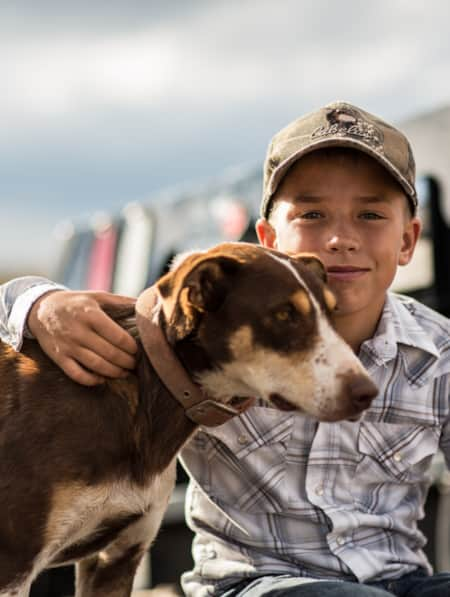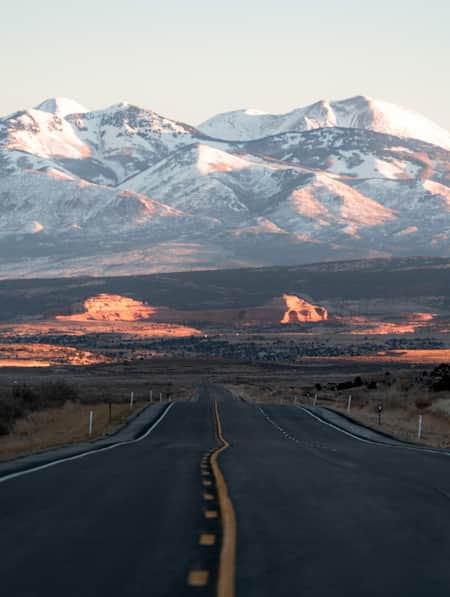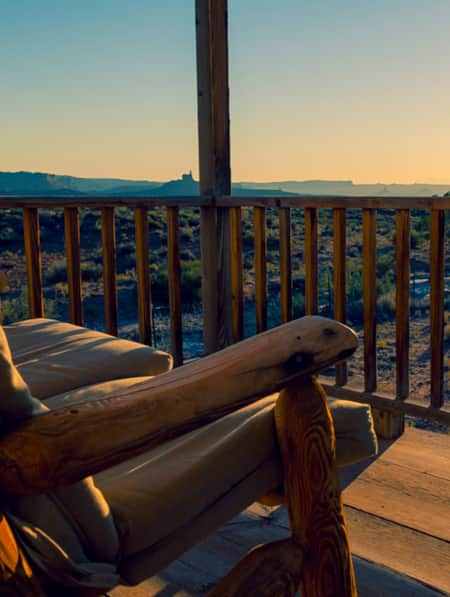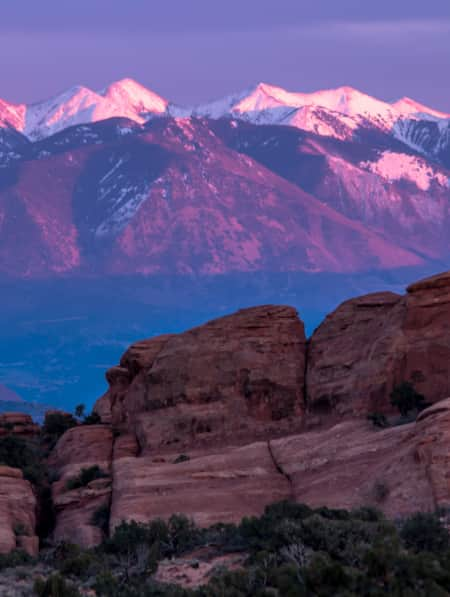Canyonlands Campgrounds
-
Island in the Sky (Willow Flat) Campground
Island in the Sky is a modest campground with 12 first-come, first-served campsites and is open year-round. There are vault toilets, picnic tables and fire pits, though there are no water sources (water can be obtained at the visitor center). RVs are welcome but there are no hookups available. Camping is $15 per night. Note that the campground fills up quickly in the prime spring and fall.
-
The Needles Campground
The Needles Campground is the largest developed campground in the park with 29 sites. It allows reservations at 12 sites in the spring and fall (March 15-June 30, September 1-October 31) with a cost of $20 per night. Otherwise, it’s first-come, first-served. Many campsites have juniper trees that provide welcome shade.
"Views from the high rims surrounding the various canyons look down into the mysterious and inviting depths while exploring the canyon floor can reveal a hidden world of defiant forests."
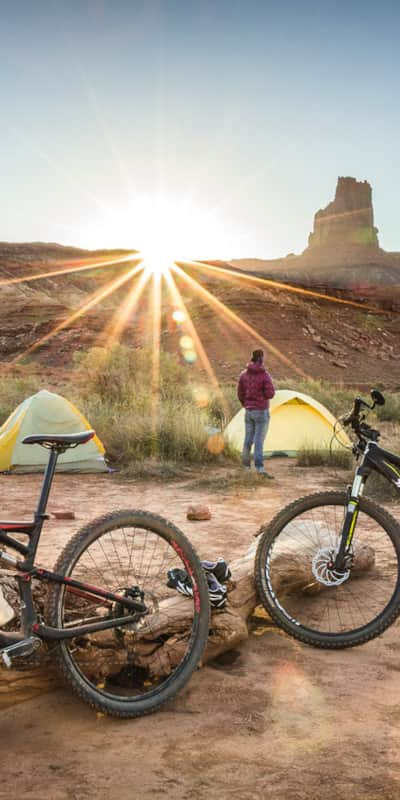
Backcountry Camping in Canyonlands
Backcountry camping is an elevated experience in Canyonlands, but please note that the area can be extremely difficult to navigate. Even experienced backpackers should be well-versed in desert navigation before setting out. Park rangers are extremely knowledgeable and can help you develop your itinerary.
Four districts comprise the backcountry zones: Island in the Sky, The Needles, The Maze and the rivers within the park boundaries. Permits are required for all overnight backcountry travel, with special permits for each mode of transportation. Permits should be acquired at least six months in advance for the more popular destinations, such as the amazing White Rim Campground and Cataract Canyon. The National Park Service website has more details on permits. Fees vary depending on the location and modes of travel.
The best way to reach backcountry sites is by mountain bike, 4x4 vehicle, dirt bike, boat or horseback, though backpacking is also an option. Traveling by foot in Canyonlands is generally not beginner-friendly due to the lack of water sources, challenging navigation and hot climate. However, the adventure potential is nearly endless for those with established backpacking skills.
White Rim Trail and White Crack Campground
The White Rim Trail is an incredible way to experience the stunning deserts and beautifully-carved canyons of Canyonlands National Park. This 100-mile off-roading trail takes 2 to 3 days to complete and has many reservable campsites. The most popular of which is White Crack Campground, located near the trail’s halfway point. This large campsite offers unmatched views of both The Needles and The Maze district of the park. White Crack Campground, and the others along the trail, are reservable up to 12 months in advance on recreation.gov.
Cataract Canyon Camping
This 47-mile-long canyon on the Colorado River is a popular rafting adventure. Within the canyon, rafters will experience 14 miles of raging rapids with difficulty ranging up to Class V. This river trip takes 2 to 3 days to complete and requires overnight camping. While rafting on the river requires a river permit, the 42 campsites along the shoreline are available on a first-come, first-served basis. Cataract Canyon is a stunning destination with towering red cliffs lining its fast-moving waters, but it is dangerous. The rapids are powerful and can easily capsize a raft. The river can be very cold, and hypothermia is a real danger. Adequate preparation, research, and training are essential before attempting a rafting expedition.
Devil’s Kitchen
Devil’s Kitchen is an iconic area near The Needles Campground, characterized by massive boulders, cliffs, and red rock formations surrounding its campsites. Devil’s Kitchen requires an overnight backcountry permit for the Needles area and has four reservable campgrounds. The drive approaching this campsite is extremely challenging and requires a properly-outfitted 4x4 off-roading vehicle.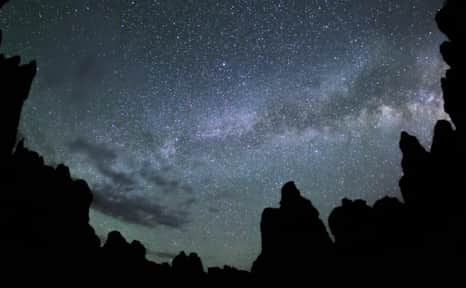
Canyonlands is a certified International Dark Sky Park.
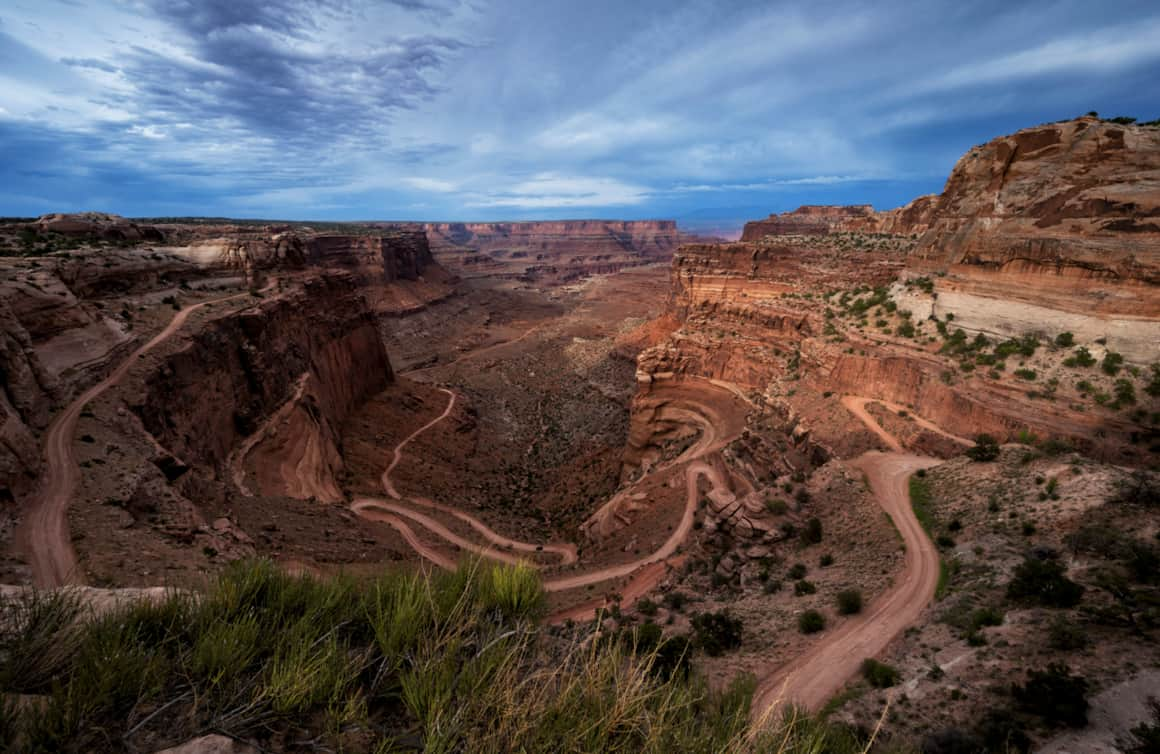
Canyonlands National Park stretches across 527 square miles.
